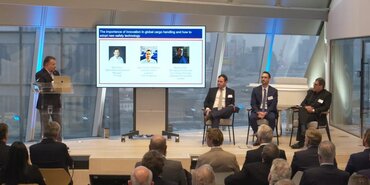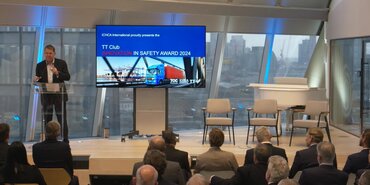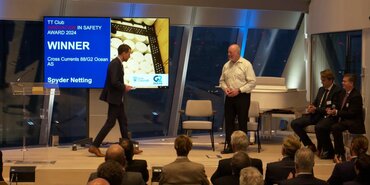Man Meets Machine: Managing Personal Injury and Machine Pedestrian Interface
A panel discussion was held to discuss the challenges of managing personal injury and machine pedestrian interface in the shipping industry. The panellists included Evert Bulcke, CEO of Rombit; Richard Steele, CEO of ICHCA International; and Lee James, agency manager for DP World.
Four Key Risks Lead to Severe Injuries or Fatalities in Shipping Industry
Steele began the discussion by noting that there are four key risks that lead to severe injuries or fatalities in the shipping industry:
- Crushed by cargo
- Vehicle-person interface
- Confined spaces
- Fall from height
James added that the issue of vehicle-person interface is a particularly important one for the industry to address, as it can lead to serious injuries or fatalities.
Technology and Training Key to Preventing Personal Injuries
Bulcke then spoke about the role of technology in mitigating risk. He noted that there are a number of technologies that can be used to monitor and protect workers, such as wearable devices, sensors, and cameras. However, he stressed that technology is only one part of the solution. He also emphasised the importance of training workers on how to use the technology safely and effectively.
James agreed with Bulcke, noting that training is essential for preventing accidents. He also said that it is important to get workers involved in the development and implementation of new safety technologies.
Challenges and Solutions to Implementing New Safety Technologies
The panellists then discussed the challenges of implementing new safety technologies in the shipping industry. They noted that there are a number of challenges, including:
- False positives: If a technology is not properly designed, it can generate false positives, which can lead to workers becoming desensitised to the alerts and ignoring them.
- Acceptance by workers: Workers may be reluctant to accept new safety technologies, especially if they feel that the technology is being used to monitor them.
- Cost: New safety technologies can be expensive, which can be a barrier for some organisations.
The panellists also discussed some of the solutions to these challenges, including:
- Testing and evaluation: It is important to test and evaluate new safety technologies before they are implemented in the workplace. This will help to ensure that the technology is effective and that it is accepted by workers.
- Training: Workers need to be trained on how to use new safety technologies safely and effectively. This training should be ongoing, as new technologies are developed and implemented.
- Partnership: Organisations should work with workers, unions, and other stakeholders to develop and implement new safety technologies. This will help to ensure that the technologies are accepted and used effectively.
The panellists concluded the discussion by emphasising the importance of working together to prevent personal injuries in the shipping industry. They stressed the need for collaboration between industry stakeholders, including shippers, terminal operators, and equipment manufacturers. They also called for the development of new and innovative safety technologies.
The next panel at the Safety Awards discuss how to reduce damage in carriage of cargos and containers.
- Author
- TT Club Loss Prevention
- Date
- 30/03/2023





